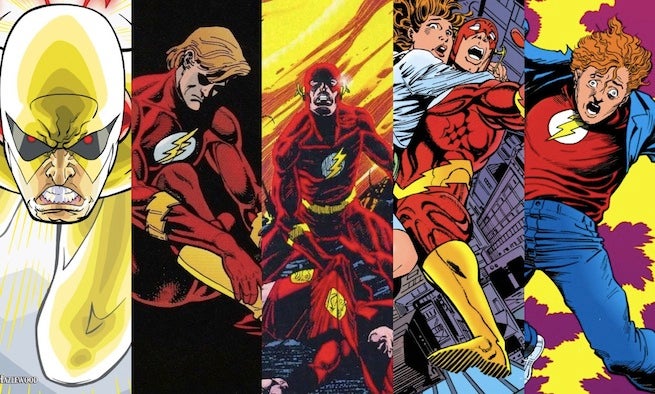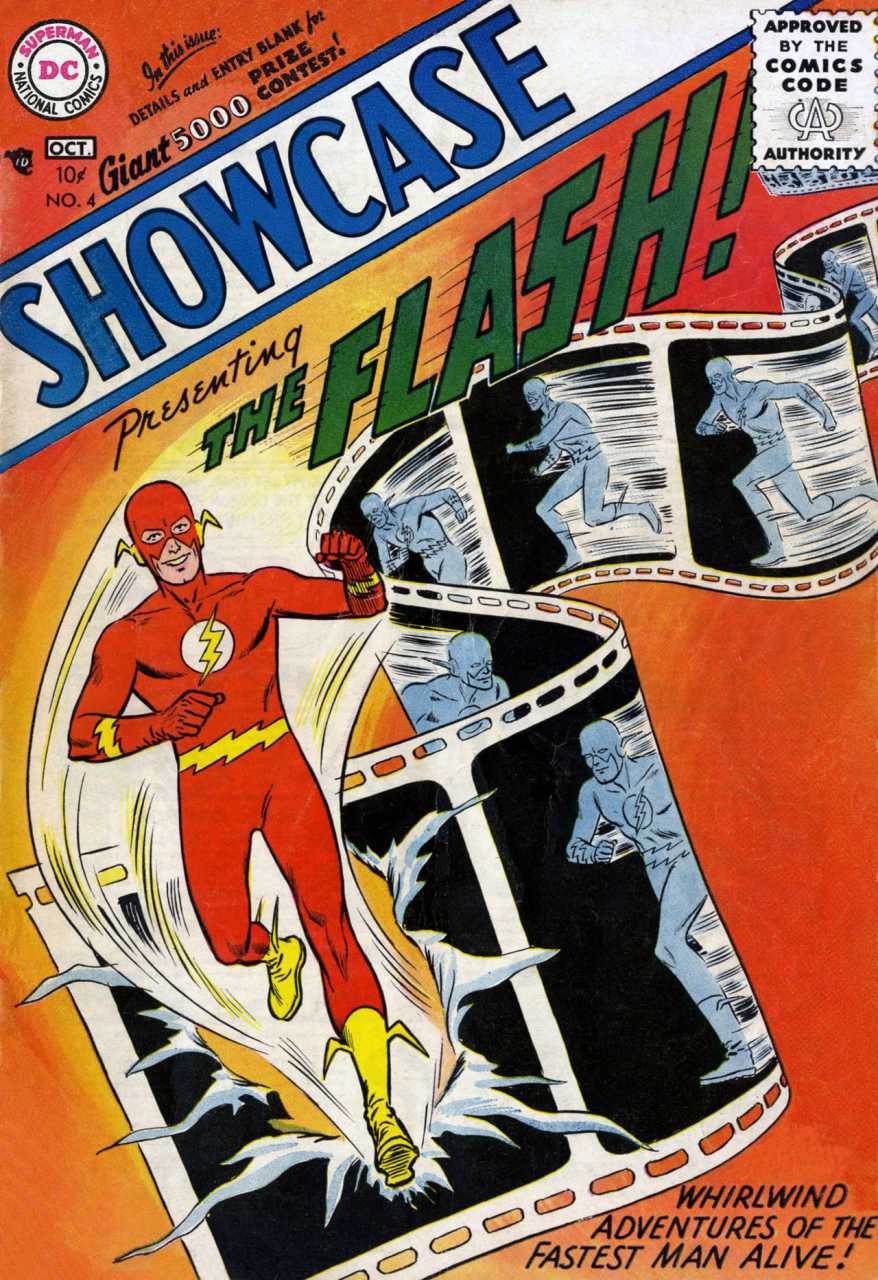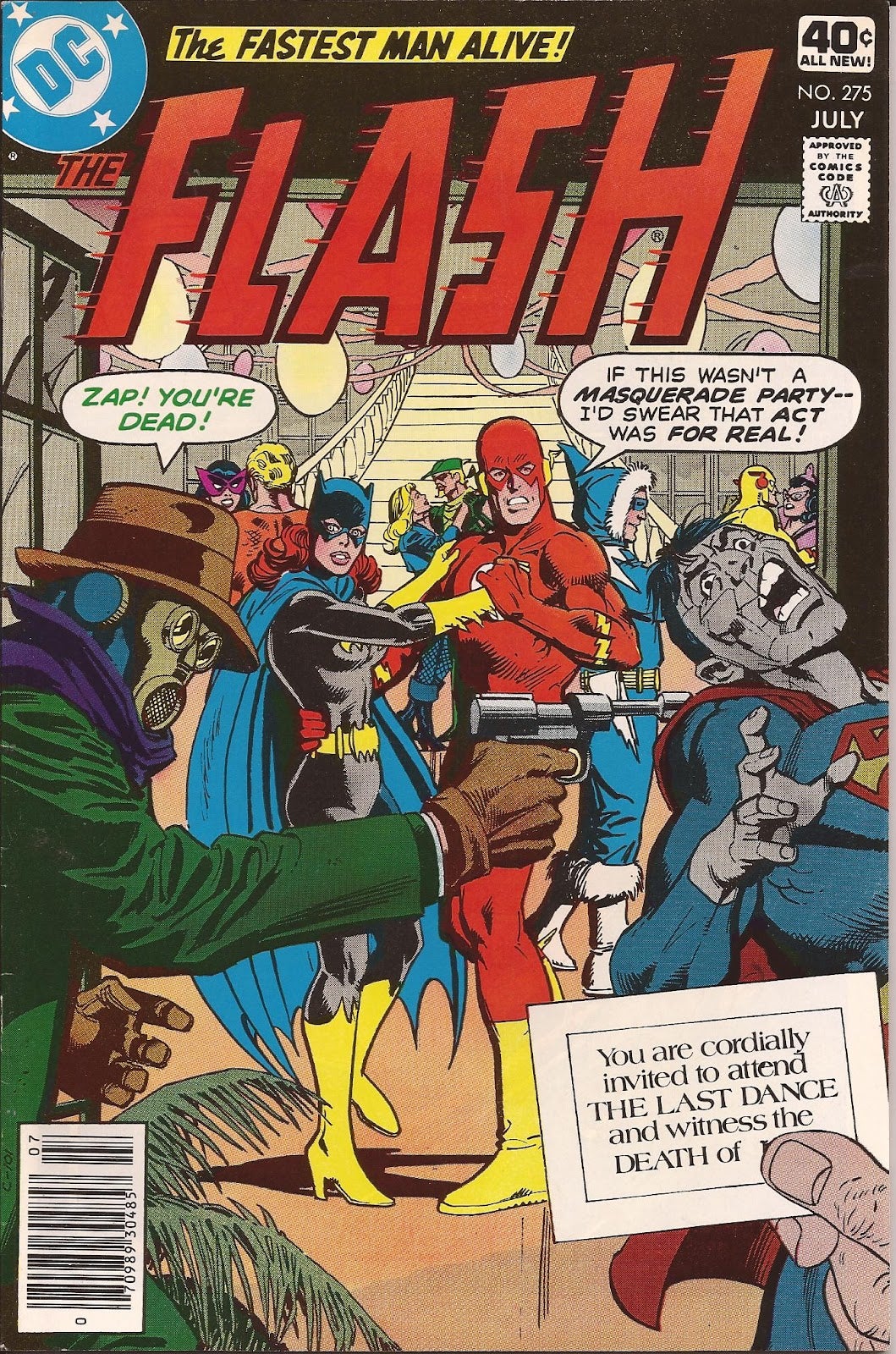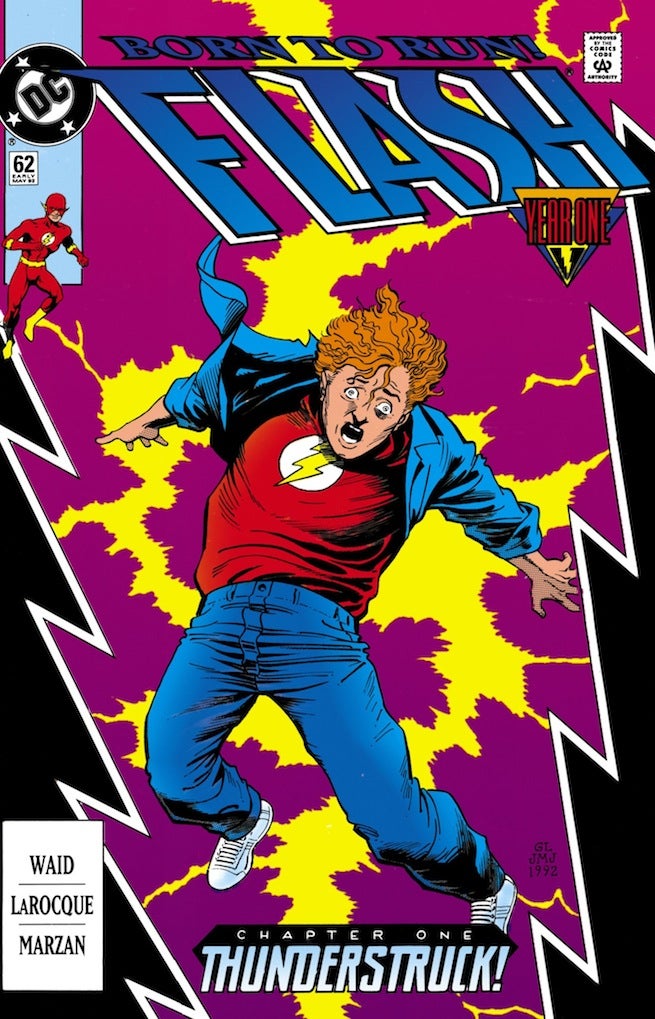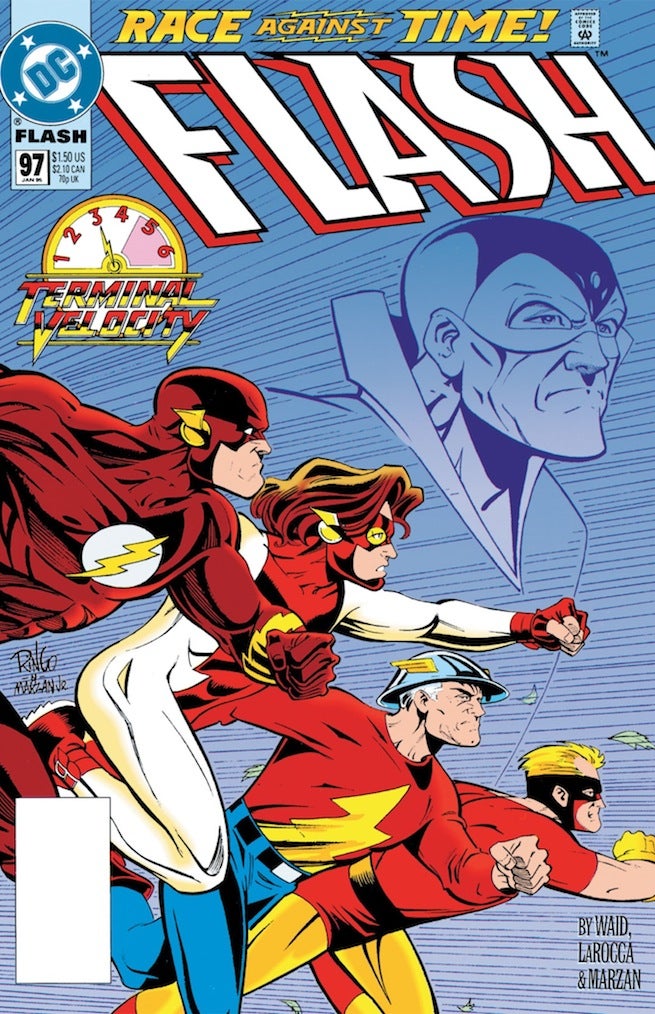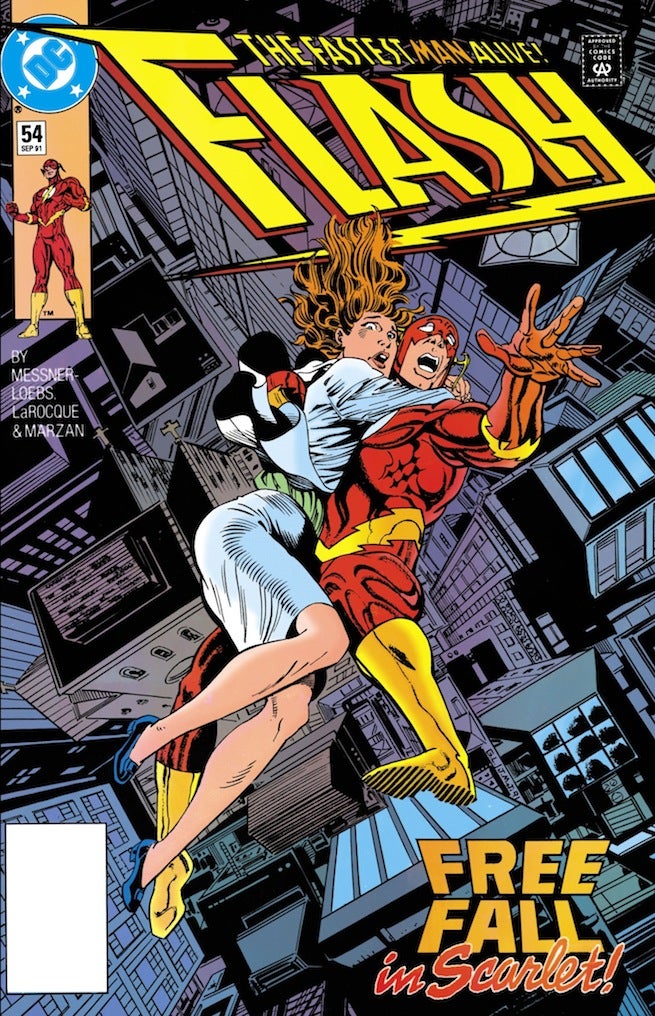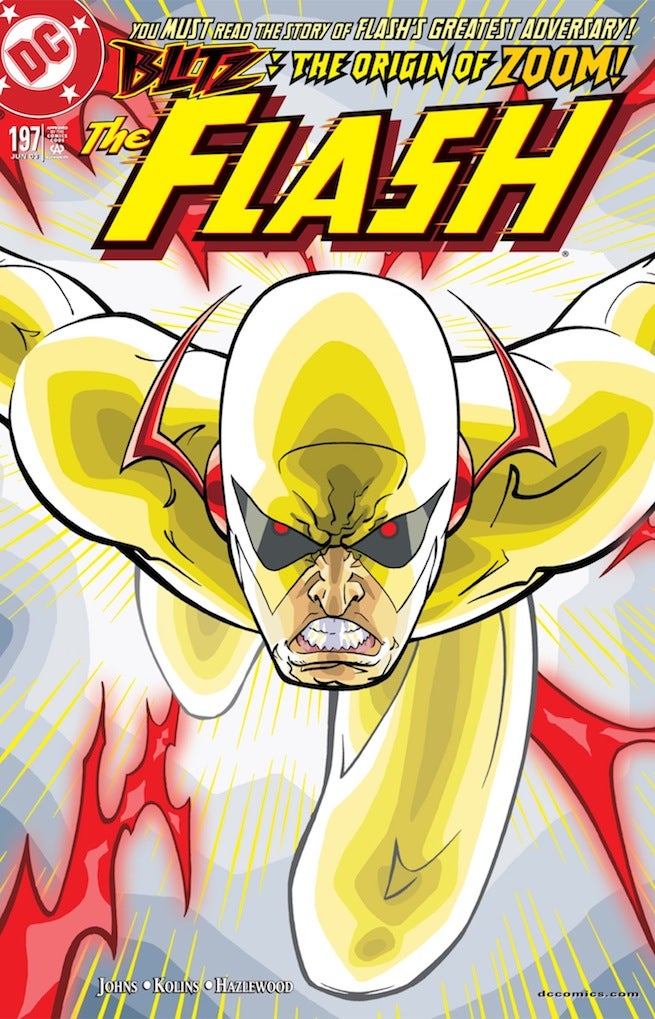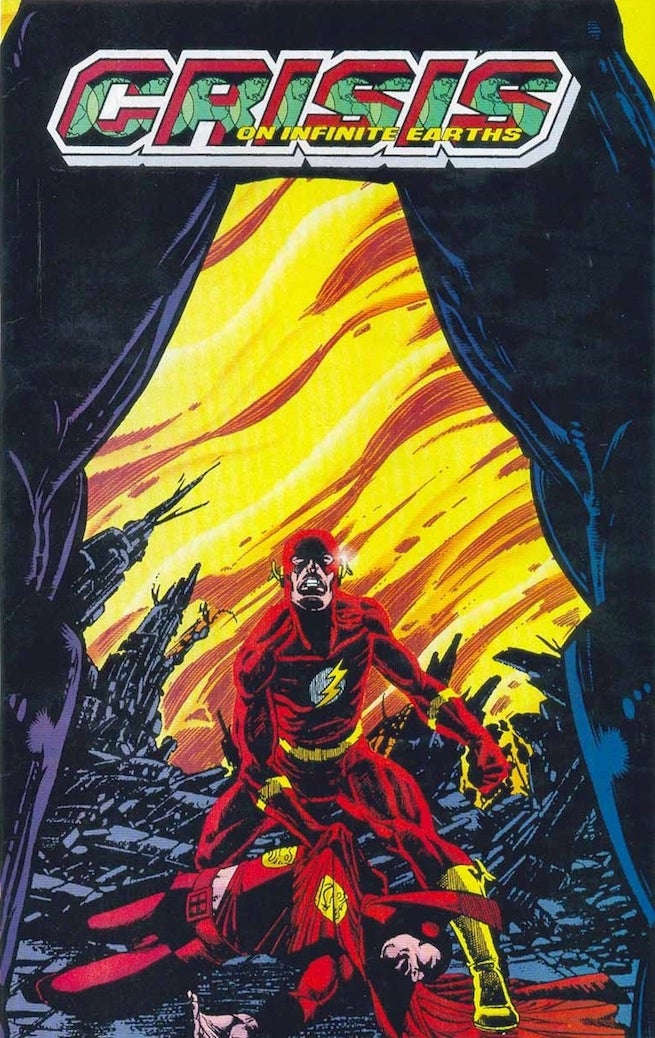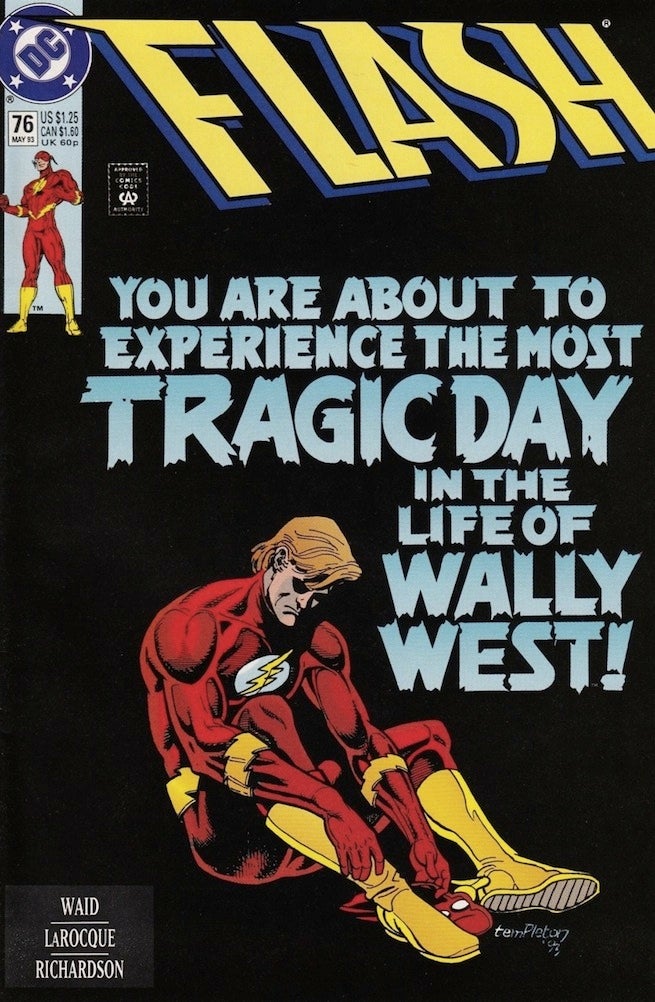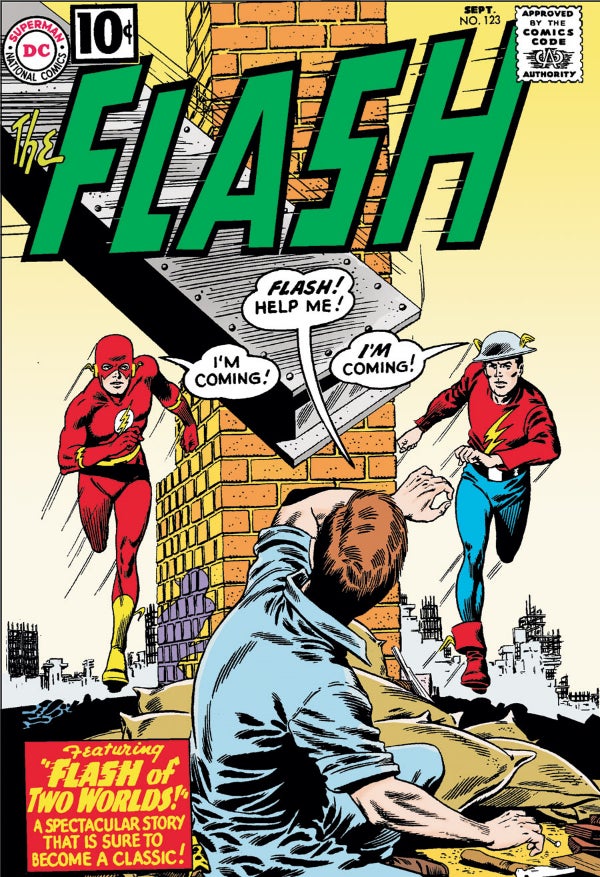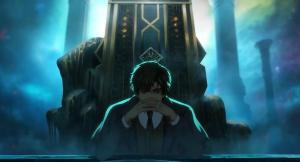With The Flash returning from its mid-season break this week and the character celebrating the 75th anniversary of his very first appearance in Flash Comics #1 in January, we thought we’d rank the 20 greatest Flash stories of all time. The first part of this list ran earlier this week. Now let’s take a look at the final 10 entries in our list:
Videos by ComicBook.com
10. “Absolute Zero” (Flash #182)
This modern day classic from Geoff Johns is actually one installment of a larger, six-part arc, but it’s this issue that traditionally gets all the attention from critics and fans for its wonderfully deep look at iconic Flash rogue Leonard Snart, aka Captain Cold. Johns holds nothing back in this issue as it pertains to Snart, forcing the reader to identify and sympathize with this otherwise cold-blooded killer. Snart narrates the issue, talking about his philosophy towards killing and crime, while also revealing how his drunkard father beat into him the idea that real love doesn’t exist. Snart also talks about the relationship he had with his sister, Lisa (aka, Golden Glider), whose death fully transformed the character into the epitome of “cold.” When the story ends, Snart is meeting a prostitute for their weekly “date night” before he tells the woman that he’s no longer in the mood (because of all of the introspection).
It’s very difficult to view Captain Cold the same after reading a comic so rich and emotional. It’s become somewhat commonplace to add shades of grey to a villain, but the sincerity and authenticity in which this story is told is absolutely transcendent.
9. “Mystery of the Human Thunderbolt” (Showcase #4)
Flash Comics #1 might have marked the first appearance of the Golden Age Flash, Jay Garrick, but Showcase #4 is arguably the more important chapter in the 75-year history of the character since it contains the debut of Barry Allen, the Silver Age (and highly popular) iteration of the speedster. As such, many comic book historians believe that Showcase #4 marks the beginning of the industry’s Silver Age.
Robert Kanigher, Carmine Infantino and Joe Kubert collaborate to bring this comic together, which isn’t just historically important, but is also a heckuva lot of fun to read. The story introduces a lot of the tropes and themes that would go on to define Barry Allen and the Flash, including his relationship with Iris West and his penchant for always being late for their dates (and being called “slow” as a result). There’s also a great sequence of Barry discovering his powers where he’s in a diner and watching a dish fall in slow motion (which was later referenced in the current television series). This issue depicts joyful superhero comics at its finest.
8. “The Death or Iris Allen” (Flash #275-284)
This nearly year-long comic book arc marks a true turning point in the life of Barry. Being published at a time where comics were notoriously becoming darker – with innocent characters like Gwen Stacy being murdered and themes of drugs and addiction being referenced heavily – Flash finally makes the jump to a grittier era, losing the gloss and shine that had always been associated with the character. When Barry’s wife Iris is mysteriously murdered at a costume party, Flash spends the next nine issues trying to figure out who the killer is while also coming to terms with the shock and dismay of losing the love of his life. It is later revealed that the murderer is Barry’s arch-foe, Eobard Thawne, aka the Reverse-Flash, who let his obsession with his adversary convince him that he needed to marry Iris. When Iris rebuffs Thawne’s advances, he vibrates his hand inside of her skull and kills her.
Barry is understandably distraught by this turn of events, and even appeals to the Justice League and his good friend Green Lantern to find a way to resurrect Iris. Instead, this would be the one incident that Barry would have to carry with him for the rest of his life. The events of this arc would haunt Allen for the duration of his career as a superhero, including his trial in the mid-1980s (which was ranked in part one of this list). It also firmly established Reverse-Flash as Barry’s true nemesis.
7. “Born to Run” (Flash vol. 2 #62-65)
As part of Mark Waid’s character-defining run on the second volume of the Flash (which starred Wally West instead of Barry Allen), Wally gets the “Year One” treatment with this excellent origin retelling. Waid and artist Greg LaRocque capture the fun and innocence of the original Wally origin from the Silver Age, but then take things a step further by showing Wally learning the ropes from Barry and eventually coming to terms with the fact this his body chemistry wasn’t initially capable of handling the Speed Force. Still, even as Wally is moping around and crying out that life isn’t fair without his powers, he finds a way to be truly heroic, providing the first hint that Waid’s run was going to be just as much about establishing West as a bonafide hero, as it was about telling great stories using the red and yellow speedster as a focal point.
6. “Terminal Velocity” (Flash vol. 2 #95-100)
Another Waid Wally West story (you’re probably going to start to notice a trend here) from the early/mid-90s that demonstrates both the very best and the very worst of Wally. The arc kicks off with Wally getting a glimpse into the future and finding some very unpleasant things were about to transpire. While the first impression is that Wally saw himself get killed, we later learn that he witnesses the death of his girlfriend, Linda Park. As a result of his vision, he proceeds to manipulate all of his “Flash Family” members like Impulse and Jesse Quick. However, when Wally is eventually sucked into the Speed Force himself, the drama becomes centered on whether or not West’s love for Linda is enough to help him overcome the seemingly impossible odds.
Adding to legacy of this storyline is how the entire “Flash Family” concept is really played up by Waid – something the writer would continue to do over the duration of his run. Prior to this arc, Wally had a close relationship with Barry and later Jay, but “Terminal Velocity” analyzes his relationship to all of the universe’s speedsters. As a result, it’s a celebration of all things red, yellow and fast.
5. “Nobody Dies” (Flash vol. 2 #54)
William Messner-Loebs and Greg LaRocque team-up to bring this phenomenal done-in-one story where Wally has to defy all the odds (and in effect, his powerset) to rescue a friendly flight attendant who has been sucked out of a damaged plane mid-flight. Keep in mind that this story came at a point in Flash history where fans were still becoming comfortable with the idea of Wally serving as the Flash, and the character just hadn’t had too many moments of unbridled heroism. Messner-Loebs delivers this moment, as the flight attendant falls to what would seemingly be her death and West, despite the fact that he cannot fly, jumps out of the plane to save her, manipulating the Speed Force to control their descents. It’s an absolutely exhilarating story that’s made all the more impressive by the fact that creative team managed to cram this rich little tale into the confines of one issues.
4. “Blitz” (Flash vol. 2 #197-200)
Considered by many to be the pinnacle of Geoff Johns’s run on The Flash in early 2000s, “Blitz” marks the debut of a new iteration of classic villain. The story focuses on Hunter Zolomon, a former police detective and a friend of Wally’s who totally snaps when he asks his buddy the Flash to uses his speed powers to erase the fateful day where Zolomon, acting solely on ego, accidentally marches his father-in-law to his death, thereby destroying his marriage and life. When Flash refuses to change time, Zolomon tries to figure out the best way to make Wally feel the level of pain that he was forced to feel himself that day. He starts by attempting to manipulate the Cosmic Treadmill himself, but is badly injured when the device explodes. But the accident also provided Zolomon the ability to manipulate time, giving birth to the villain Zoom – a sequel to Barry’s nemesis Professor Zoom.
What follows is an incredibly tense story where Zolomon’s ability to manipulate time makes him appear faster and more powerful than any of the speedsters. Johns’s scripts lets the reader believe that Zoom is going to kill Wally’s love, just as Reverse-Flash did with Barry and Iris (and attempted to do with Fiona Webb), but instead Zolomon goes one worse: he injures Linda to the point that she miscarries the twin babies she was carrying. Johns would later reverse the events of this story, but it doesn’t make it any less of a gut punch and a rock bottom moment for Wally.
3. “A Flash of the Lighting” (Crisis on the Infinite Earths #8)
Even before it published its eighth issue, 1985’s Crisis on the Infinite Earths was shaping up to be a fairly epic, genre-defining miniseries that instituted a shift in the status quo that most events today could only dream about. However, Crisis #8, which depicts the death of Barry Allen, and in many ways, the final lingering pieces leftover from DC’s Silver Age, is undeniably a landmark comic and arguably one of the greatest stories from the past 30 years.
It’s not only that DC had the stones to kill off Barry in the midst of its first big event, but it was how creators Marv Wolfman and George Perez went about doing it. He wasn’t just killed in a wild brawl, or callously murdered by a supervillain run amok. Instead, Barry sacrifices himself to the Speed Force in order to save the universe. By the time the eighth issue rolled around, it was patently clear that none of the DC Universe’s heavy hitters were going to be able to stop the story’s antagonist, the Anti-Monitor. So it all came down to Barry doing what he does best, running very fast – faster than he’s ever run before – to siphon the energy out of the dreaded anti-matter canon and save the world.
We all read superhero comics for different reasons, but there’s unquestionably a large percentage of us who pick up this funny books because we want to see characters with awesome powers do awesome, noble things with those powers. That’s what Crisis #8 captures. It’s truly one of the better send-offs for a character in comic book history.
2. “The Return of Barry Allen” (Flash vol. 2 #73-79)
Considered by many to be Mark Waid’s magnum opus during his critically acclaimed run on The Flash in the 1990s, “The Return of Barry Allen” is notable for how it used the presumed resurrection of the Silver Age Flash as a way to build Wally West’s credibility as the current incarnation of the hero. Waid takes the standard dead hero returns from the grave hero and turns it on its ear when it becomes obvious that there’s something not quite right about Barry. The congenial hero is easily agitated and rages with jealousy at the thought that his nephew Wally operating as the Flash. Wally eventually approaches some of the other speedsters about confronting Barry, but has to face his own fears of inferiority by addressing this problem alone.
As it turns out, the returning man is not actually Barry, but Professor Zoom/Reverse-Flash. The reader learns (via a bit of a retcon) that in the future, Zoom is such a massive Barry fan, he even changes his appearance to look like him. When he uses the Cosmic Treadmill to go back in time to meet his hero, he is driven mad by the fact that he is destined to become a villain. So he convinces himself that he’s Barry, thus giving the appearance that the Silver Age Flash had returned.
By the end of this story, any Flash readers who were still on the fence about Wally were likely convinced that he was a worthwhile hero. It’s funny how the return of Barry Allen actually cemented his young nephew as the red and yellow hero of choice.
1. “Flash of Two Worlds” (Flash #123)
The comic book world is filled with a lot of hyperbole but it’s not an overstatement to call 1961’s “Flash of Two Worlds” by Gardner Fox and Carmine Infantino one of the most groundbreaking comic books of all time. This comic book introduced the idea of a Multiverse – a series of parallel worlds – into the world a superhero comics. All one has to do is look at some of the hottest comic books and storylines in shops today – Amazing Spider-Man and “Spider-Verse,” Grant Morrison’s Multiversity, Jonathan Hickman’s Avengers and New Avengers, this spring’s Secret Wars and Convergence events – to get an understanding of just how profound an effect the Multiverse had. But beyond that, “Flash of Two Worlds” also gave DC the idea to resurrect many of its Golden Age properties like Jay Garrick, Alan Scott (the Golden Age Green Lantern) and Hawkman (which, in turn, led to the founding of the popular Justice Society of America).
As for the comic itself, “Flash of Two Worlds” blew minds when it was first published for how Barry Allen was able to meet his Golden Age predecessor, Jay Garrick on the parallel Earth-2 world. Together, the two Flash’s teamed-up to fight some of Jay’s Golden Age rivals, the Fiddler, Thinker and the Shade. In the wake of this issue, every year DC would publish a Justice League/Justice Society crossover (which lasted until the Multiverse was dissolved in Crisis on the Infinite Earths).
Some may deride the comic that it is only a classic in hindsight – best remembered for what came after its initial publication. But Flash #123 was also an insanely popular comic at the time of its release, earning a slew of fan awards in the early 60s. Plus, even putting aside the quality of the story (which is very fun Silver Age fare), how can one easily dismiss a comic that changed so much about the way we read comic books? This list certainly isn’t going to do that, which is why “Flash of Two Worlds” is the greatest Flash story of all time.


